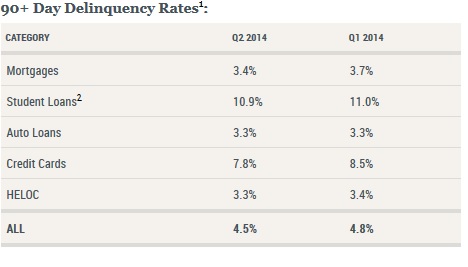Former Federal Reserve Chair Ben Bernanke said this week that the health of the consumer could be at its best since prior to the economic collapse. In a way, he may be correct considering that the appetite for borrowing among consumers has flourished in recent years, particularly when it comes to automobiles.
This appetite, though, is predicated on a phony economic recovery that has been manipulated by the Federal Reserve’s money-printing madness and artificially low interest rates.
It was discovered in September that a record number of United States consumers took out new loans to purchase chars. According to the Experian survey, 85 percent of new car purchases and 53.8 percent of used car acquisitions were financed in the second quarter last year.
Although this may appear to be a sublime rejuvenation for the U.S. economy, the size of the auto loans and monthly payments are increasing, which could eventually spell trouble for these borrowers once rates start rising and the economy collapses once again. Who will be stuck with these jumbo car loans?
David Stockman, former Reagan budget director and bestselling author of “The Great Deformation,” wrote in his latest article on Contra Corner that the subprime auto lending scam created by Wall Street and the central bank could inevitably be a tremendous burden on the economy.
“The apparent macro-economic recovery and prosperity of 2004-2008 rested on the illusion of an unsustainable debt-fueled housing boom; this time it’s the auto sector,” wrote Stockman. “The fact is, outside of autos and student loans, households have reached peak debt. That is after a 30-year spree of getting deeper and deeper into hock, middle-class households stopped adding to leverage on their wage and salary incomes at the time of the financial crisis; and since then they have actually deleveraged slightly — albeit at levels that are still way off the historical charts.”
Stockman added that a significant portion of the recent jump in auto sales is due to subprime loans to borrowers with poor credit scores. Also, they account for nearly one-third of all loans with an interest rate of 20 percent or more. He argued that these loans are available because of junk debt financing of non-bank lenders.
“Car loans are collateralized and recoverable by the repo man when borrowers fail to pay,” averred Stockman. “But unlike the case of housing, there has not yet been a crash in the value of new and used vehicles. So lenders — and especially the big banks like Chase and Wells Fargo — have had a field day making auto loans.”
In the end, the subprime mortgage will pop once again as soon as the default rate ascends to the heavens. This could be the final Fed-induced recovery in auto sales thanks to the “maniacal embrace of ruinous printing press economics.”


Leave a Comment